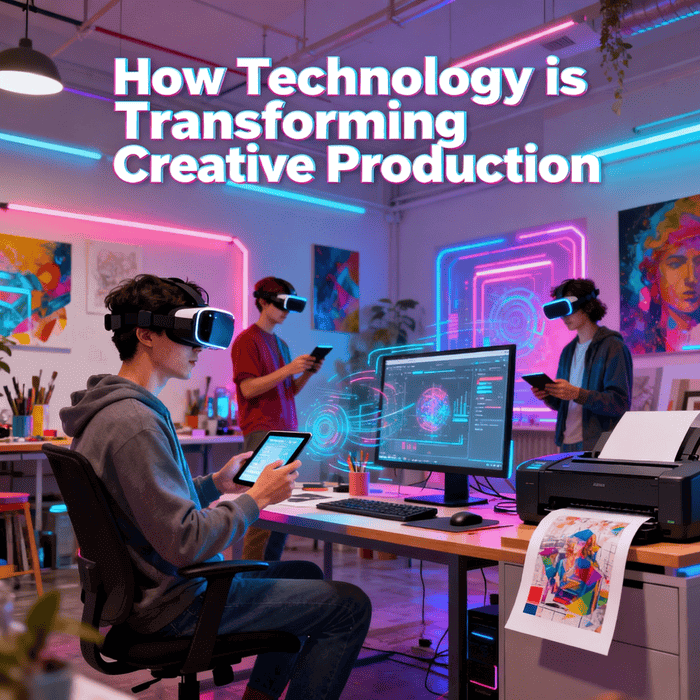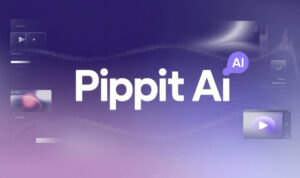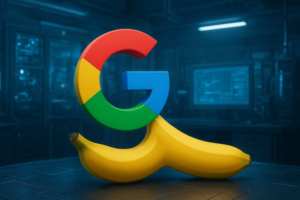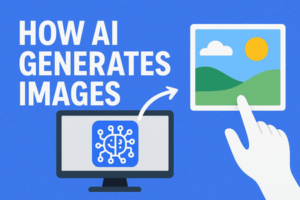Table of Contents
How Technology is Transforming Creative Production
Creative production has always been an evolving field, but recent technological advancements are redefining the way artists, designers, and businesses bring ideas to life. From digital tools to automated machinery, technology now enables unprecedented levels of efficiency, precision, and innovation in creative workflows.

Digital Tools and Design Software
One of the most significant shifts in creative production comes from digital design software. Programs for graphic design, 3D modeling, video editing, and animation allow creators to visualize ideas more accurately and iterate faster. Tasks that once took hours, or even days, can now be completed in a fraction of the time, enabling teams to focus more on innovation rather than repetitive manual work. Collaborative cloud-based platforms also make it easier for multiple stakeholders to contribute in real time, streamlining feedback loops and reducing the risk of miscommunication.
Automation in Production
Automation is another game-changer for creative industries. Robotics and AI-driven systems can now handle repetitive tasks such as cutting, printing, and assembly, which allows human talent to concentrate on higher-level creative decision-making. For example, in the printing sector, large-format machines like the Mimaki large format printer can produce high-quality graphics at scale while maintaining intricate detail. By automating complex tasks, businesses can increase output, reduce errors, and meet tight deadlines without sacrificing quality.
The Rise of Artificial Intelligence
Artificial intelligence is no longer limited to research labs; it has become a practical tool in creative production. AI-powered software can generate design options, suggest color palettes, and even create entire visual compositions based on user input. These systems do not replace human creativity but augment it, offering inspiration and efficiency that was previously unattainable. For example, AI-assisted video editing tools can automatically select the best shots from hours of footage, drastically reducing post-production time while preserving a creative edge.
Virtual and Augmented Reality
Virtual reality (VR) and augmented reality (AR) are transforming the way creators conceptualize and test their work. Architects, interior designers, and product developers can immerse themselves in fully interactive simulations of their projects before anything is physically produced. This not only reduces costly mistakes but also provides a more compelling way to present ideas to clients or stakeholders. VR and AR are expanding the boundaries of creative production, allowing for experimentation that blends the physical and digital worlds seamlessly.
Sustainability Through Technology
Technology is also driving sustainability in creative production. Digital prototyping, on-demand printing, and energy-efficient machinery reduce waste and resource consumption. For instance, precise printing ensures that materials are used efficiently, reducing excess and enabling eco-friendly production practices. By integrating sustainable technologies, creative industries can achieve both environmental responsibility and economic efficiency.
Collaboration in a Connected World
Finally, technology facilitates collaboration like never before. Cloud storage, project management tools, and real-time communication platforms allow creative teams spread across the globe to work together seamlessly. This interconnected environment encourages the sharing of ideas and expertise, fostering innovation that draws on a wider range of perspectives. The result is not only faster project completion but also richer, more diverse creative outputs.
Embracing the Future
The integration of technology in creative production is far more than a trend; it is a paradigm shift. By adopting digital tools, automation, AI, VR/AR, and sustainable practices, creators and businesses are redefining what is possible. Technology does not diminish human creativity; instead, it amplifies it, providing the resources and flexibility to explore bold ideas and execute them with precision. As these technologies continue to evolve, the creative landscape will become increasingly dynamic, efficient, and innovative.







